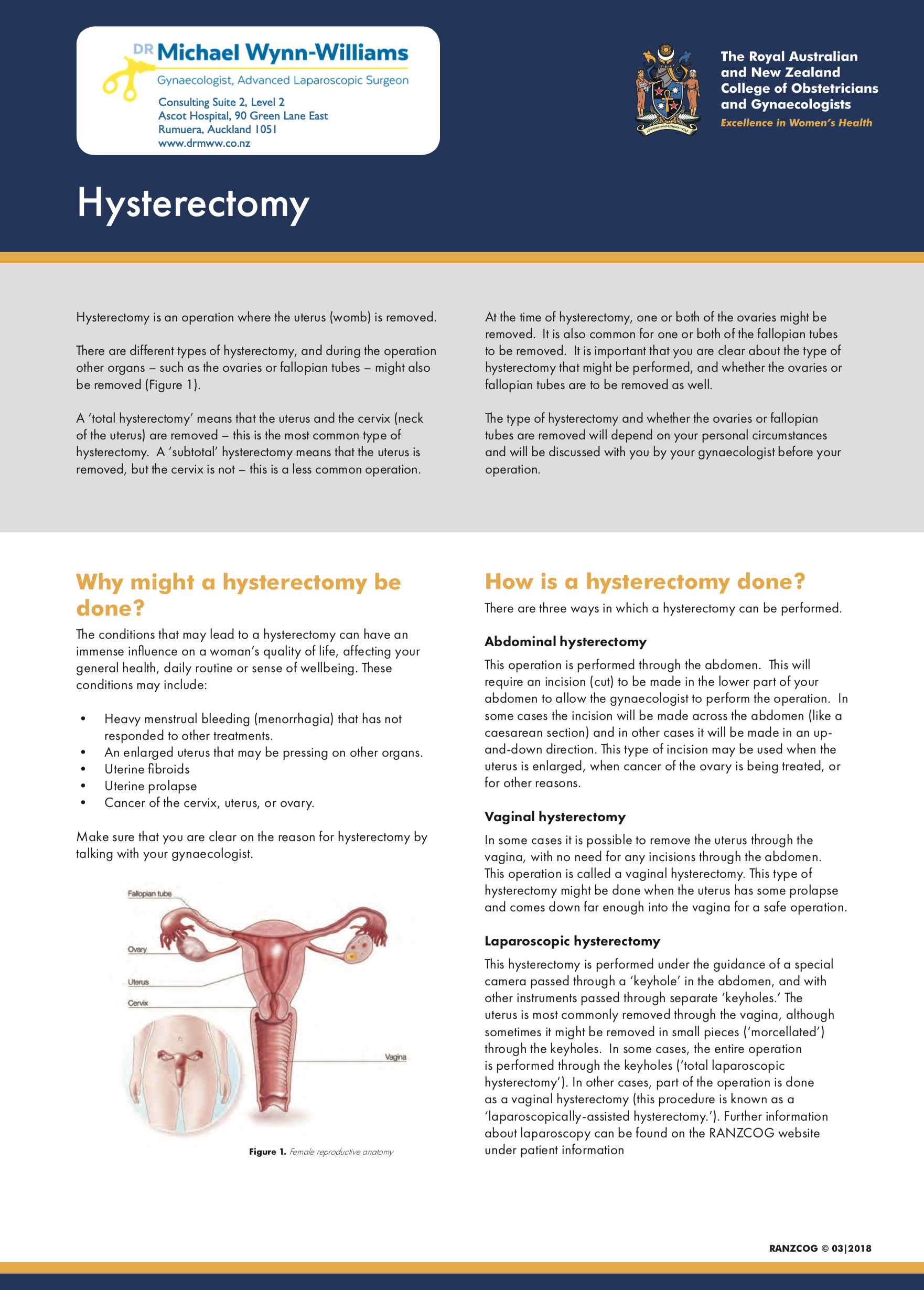Total Laparoscopic Hysterectomy
Total Laparoscopic Hysterectomy (TLH) is a surgical procedure that will remove the cervix and uterus using a laparoscopic (key-hole) approach. The ovaries and tubes may or may not be removed during this procedure, depending on the reasons for the surgery. If the ovaries are removed, you will enter the menopause (“change of life”).
The anatomy of the uterus, cervix and ovaries.
A hysterectomy is a major surgical procedure with physical and psychological consequences. Having the surgery performed laparoscopically generally means less blood loss, less pain, less time in hospital, and a quicker recovery. Dr Wynn-Williams has been teaching and demonstrating techniques to surgeons around the world for many years.
Surgery must be performed for the right reasons. Common reasons include painful or heavy periods, pelvic pain, endometriosis, adenomyosis, fibroids, or as a part of therapy for cancer. It is essential to recognise that hysterectomy itself is not a cure for endometriosis, and that the endometriosis must be resected (excised) at the same time. Dr Wynn-Williams will work with you to work out the best approach to manage your issues.
There may be other conservative interventions that may be appropriate for your particular condition, and they will usually have been considered before your surgery. Hysterectomy may be performed vaginally, abdominally, laparoscopically, or in a combination of the above - each with their specific advantages and risks.
TLH is performed under a general anaesthetic. A small incision is made in the umbilicus. The abdomen is inflated with gas, and a laparoscope is inserted to visualise the internal organs. Further small incisions may be made on your belly. The uterus and cervix are removed with or without both ovaries and tubes. The wounds are sealed with surgical glue. The procedure itself takes approximately one to two hours, but you can expect to be in theatre and recovery for several hours. Dr Wynn-Williams has extensive experience in performing TLH for large and often huge fibroid uterus. Dr Wynn-Williams developed innovative techniques to allow the removal of the large uterus, using case contained in-bag morcellation. Most patients can be discharged after one or two nights in hospital. Many women can be back at work after two to three weeks of recovery.
Like any operation, there are risks and benefits that are important to understand. Hysterectomy may result in variable bladder and bowel dysfunction and an increased risk of urogenital prolapse. Statistically, this risk appears to be highest following vaginal hysterectomy. Although studies have not demonstrated any overall changes in sexual function, you may experience some changes in your sex life. You can discuss any such changes in consultation with your doctor.





